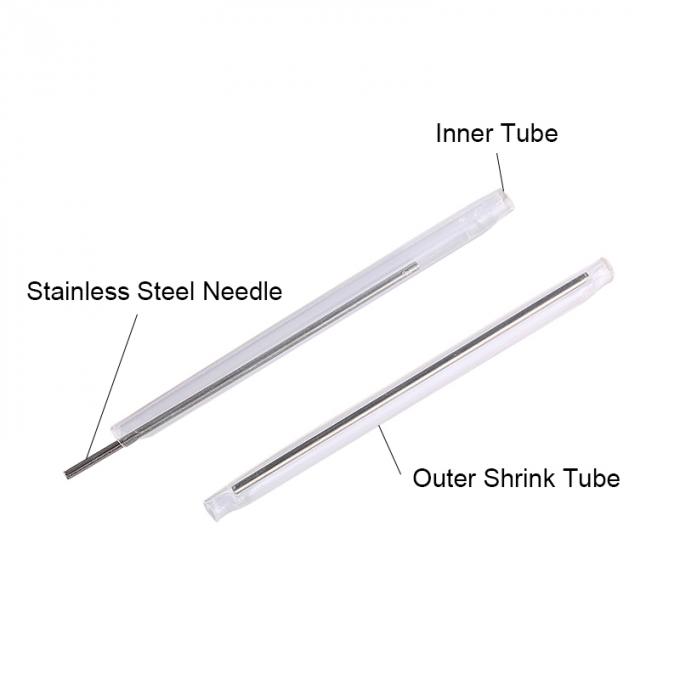Blog
Production and Quality Control Process of Fiber Splice Sleeves
Production and Quality Control Process of Fiber Splice Sleeves
Chengdu Focus Infra Materials Company is a trusted manufacturer of high-quality fiber optic splice sleeves, designed to protect optical fiber splices with reliable mechanical strength and minimal signal loss. By analyzing the material composition of fiber splice sleeves, we have developed a comprehensive production and quality control (QC) process to ensure consistency, durability, and performance in every product.
Material Composition of Fiber Splice Sleeves
A standard fiber splice sleeve typically consists of three main components:
Heat Shrinkable Outer Tube
Material: Cross-linked polyolefin
Function: Provides mechanical protection and environmental sealing after shrinkage.
Inner Strength Member
Material: Stainless steel or ceramic rod
Function: Ensures alignment and strength across the fiber splice point.
Hot Melt Adhesive Tube
Material: Ethylene-vinyl acetate (EVA) or similar thermoplastic adhesive
Function: Bonds the sleeve to the fiber and provides moisture resistance.

Production & Quality Control Workflow
1. Raw Material Inspection
Before production begins, each component undergoes strict incoming inspection:
Polyolefin Tubes
Check shrink ratio, clarity, diameter, wall thickness, and flexibility.
Test temperature resistance and shrink temperature range.
Strength Member Rods (Steel or Ceramic)
Measure length tolerance, surface finish, and tensile strength.
Inspect for corrosion resistance and straightness.
Hot Melt Adhesive Tubes
Verify melting point, viscosity, bonding strength, and uniformity.
QC Tools Used: Vernier calipers, digital micrometers, tensile testers, shrink ovens, chemical analyzers.
2. Component Preparation and Preprocessing
Each material is cut and prepared according to required sleeve dimensions (e.g., 40 mm, 45 mm, 60 mm):
Cutting Precision: ±0.2 mm tolerance.
Cleaning: All rods and tubes are cleaned to remove surface dust, oil, or oxidation.
Sorting: Different sleeve types (single fiber, ribbon fiber, micro sleeves) are sorted for batch-specific production.
3. Assembly Process
This is a semi-automated process to ensure alignment accuracy:
The ceramic or stainless steel rod is inserted into the inner adhesive tube.
The assembly is carefully aligned within the heat-shrinkable outer tube.
Technicians ensure concentric placement to prevent sleeve warping after shrinkage.
Key QC Points:
Rod centered and unbent
Adhesive tube evenly placed
Smooth, bubble-free sleeve surface
4. In-Process Quality Checks
During production, random samples are pulled for real-time quality checks:
Length and Diameter Verification
Concentricity Measurement
Assembly Integrity Test (shake and bend test to ensure components are fixed and aligned)
5. Heat Shrink Testing
Each batch is tested for shrink performance under controlled temperatures:
Test Conditions: 110–130°C heat chamber
Criteria:
Complete and uniform shrinkage
No cracking or deformation
Good adhesion to fiber simulation rods
No air gaps or bubbles under the sleeve
6. Tensile Strength and Adhesion Testing
Post-shrink sleeves are tested for:
Mechanical Strength
Sleeves must withstand pulling forces without breaking or detaching from the fiber.
Adhesive Bonding
Melted adhesive should maintain a strong bond to fiber in both hot and cold conditions.
Test Tools: Tensile testing machines, thermal cycling chambers
7. Final Inspection & Packaging
Before shipping, finished products undergo final checks:
Visual Inspection: Check for scratches, dirt, inconsistent lengths, and poor adhesion.
Batch Labeling: Each production lot is coded for traceability.
Clean Packaging: Sleeves are sealed in anti-static bags or trays, with moisture-proof packing materials for export.
Why Our Quality Control Matters
Thanks to this materials-based inspection process, Chengdu Focus Infra Materials Company ensures that each fiber splice sleeve offers:
✅ Consistent shrink behavior
✅ High mechanical protection
✅ Low insertion loss
✅ Strong adhesion and environmental sealing
✅ Excellent performance across a wide temperature range
Conclusion
Our thorough understanding of fiber splice sleeve materials drives our commitment to zero-defect manufacturing. By integrating precision production and strict quality control at every step, Chengdu Focus Infra Materials Company delivers reliable, durable, and high-performance splice sleeves trusted by fiber optic installers and OEMs worldwide.
For bulk orders or custom sizes, contact our team.
RELATED NEWS
- Fiber Optic Attenuators – Precision Solutions for Signal Control 2023-03-20
- LC Fiber Optic Adapter: High-Quality Connectivity Solutions by Chengdu Focus Inf 2023-02-18
- SC Fiber Optic Adapter: High-Performance Connectivity Solutions by Chengdu Focus 2023-01-15
- Key Features of Fiber Optic Adapters 2023-04-05
- Difference Between Simplex and Duplex Fiber Optic Adapters 2023-02-22
CATEGORIES
LATEST NEWS
CONTACT US
Contact: Yuki
Phone: +8618981876882
E-mail: yuki.hecy@cdfocusinfra.com
Whatsapp:+8618981876882
Add: No. 1760 century avenue, Chongzhou city, Sichuan province, China
